John Zimmer (Lyft cofounder)
description: an American entrepreneur and co-founder of the ride-sharing company Lyft
21 results

The Upstarts: How Uber, Airbnb, and the Killer Companies of the New Silicon Valley Are Changing the World
by
Brad Stone
Published 30 Jan 2017
(Fernando Vergara/AP Photo) Taxi drivers demonstrate against Uber, in Cali, Colombia, on June 28, 2016. (Luis Robayo/AFP/Getty Images) Uber co-founders Garrett Camp and Travis Kalanick in front of the Eiffel Tower in Paris. (Courtesy of Uber) Lyft President John Zimmer wearing a frog costume to promote the ridesharing service Zimride in 2011. (Courtesy of Lyft) John Zimmer, co-founder and chief operating officer of Lyft, left, and Logan Green, co-founder and chief executive officer of Lyft, have a laugh at the TechCrunch Disrupt SF 2013 conference in San Francisco on Monday, Sept. 9, 2013. TechCrunch, which runs from Sept. 9 through 11, features leaders from various technology fields and includes a competition for the best new startup company.
…
Mickey Rapkin, “Uber Cab Confessions,” GQ, February 27, 2014, http://www.gq.com/story/uber-cab-confessions. 21. Ryan Lawler, “Lyft Launches in 24 New Markets, Cuts Fares by Another 10%,” TechCrunch, April 24, 2014, https://techcrunch.com/2014/04/24/lyft-24-new-cities/. 22. Kara Swisher, “Man and Uber Man,” Vanity Fair, December 2014, http://www.vanityfair.com/news/2014/12/uber-travis-kalanick-controversy. 23. Sara Ashley O’Brien, “15 Questions with… John Zimmer,” CNN, http://money.cnn.com/interactive/technology/15-questions-with-john-zimmer/. 24. Yuliya Chernova, “N.Y. Shutdowns for SideCar, RelayRides Highlight Hurdles for Car- and Ride-Sharing Startups,” Wall Street Journal, May 15, 2013, http://blogs.wsj.com/venturecapital/2013/05/15/n-y-shutdowns-for-sidecar-relayrides-highlight-hurdles-for-car-and-ride-sharing-startups/. 25.
…
Chesky was having drinks with local attorney Sam Angus when Kalanick came up to their table and demanded to know if Airbnb was going to buy Lyft. “No, we are in the business of trips,” Chesky recalls answering. “We are in the business of trips!” retorted Kalanick, who later couldn’t recall whether he was joking or if he had been responding to an actual rumor. For a brief period in 2014, Lyft had been ready to throw in the towel, and representatives approached Uber about combining the companies. Kalanick and Emil Michael went to dinner with Lyft president John Zimmer and Andreessen Horowitz partner John O’Farrell to discuss a deal, according to three people who were privy to the conversations.
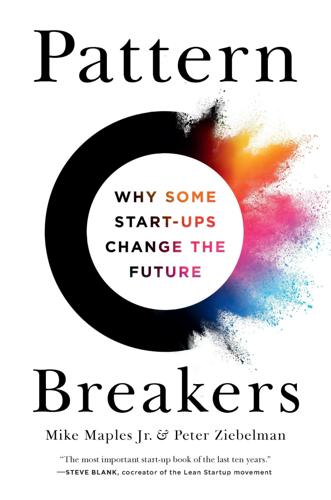
Pattern Breakers: Why Some Start-Ups Change the Future
by
Mike Maples
and
Peter Ziebelman
Published 8 Jul 2024
And you can change it, you can influence it, you can build your own things that other people can use. Once you learn that, you’ll never be the same again. Here’s how John Zimmer put it in describing Lyft: “We kept going because we really believed in our mission. I don’t know if we would have thrown in the towel unless they were to lock us up.” They were willing to launch the Lyft service despite the risk that it could be declared illegal. They pushed a gray area of the law and started Lyft with a donations model in the hopes they could charge for rides before they went bankrupt. Only the success of the ridesharing movement could change the business norm of limiting the number of taxis by requiring medallions.
…
Now founders Logan Green and John Zimmer wanted to conduct an experiment: a peer-to-peer ridesharing app that ran on smartphones. But the California state government (at the behest of the taxi lobby) would almost certainly challenge the legality of ridesharing services. Like virtually all major US cities, San Francisco required taxi firms to be licensed according to an old-fashioned medallion system that limited the number of cabs. The city would likely issue cease-and-desist letters to ridesharing services on the grounds that they were unlicensed taxi services. “Logan and John are going to call it Lyft,” Ann continued.
…
But breakthroughs are different from conventional or incremental success. They require you to think and act differently. In the chapters ahead, you’ll discover how founders we’ve already introduced, including Justin Kan and Emmett Shear of Twitch, Osman Rashid and Aayush Phumbhra of Chegg, and Logan Green and John Zimmer of Lyft, bravely upheld their groundbreaking visions. Each faced challenges, skepticism, and the pressure to conform. It takes courage to pursue an insight. When you set out to build a start-up based on what you think is a breakthrough idea, you won’t know for certain, even after stress-testing it, if you are right, and perhaps not even whether you are non-consensus.
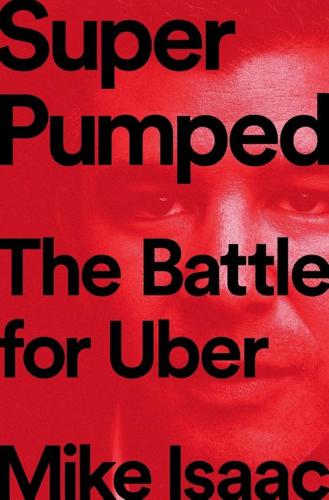
Super Pumped: The Battle for Uber
by
Mike Isaac
Published 2 Sep 2019
Chapter 19 SMOOTH SAILING Things were going well for Travis Kalanick. It wasn’t that long ago that he had met with the co-founders of Lyft—Logan Green and John Zimmer—to discuss the possibility of a merger. Though Uber was soundly beating Lyft in the war for customers, the pink, mustachioed company still managed to raise money every six months or so to keep itself afloat. Executives at Uber figured it would be cheaper to purchase Lyft outright instead of continuing the ongoing price war. Kalanick had invited John Zimmer, Lyft’s president, to his apartment high up in the Castro hills, along with his lieutenant, Emil Michael. Over cartons of Chinese food, the two sides presented what each thought would be a fair deal.
…
At Uber, winning meant the obliteration of any opponent. There wasn’t enough room for Uber and Lyft to coexist, he believed. The game was zero-sum. Every single ride-hailing car on the road in every single important market should have an Uber driver behind the wheel. Nothing less than a complete monopoly would suffice. Kalanick enjoyed the fight. At first he began to needle John Zimmer, Lyft’s co-founder, on Twitter. In playful jabs, he would troll Zimmer by asking about Lyft’s insurance policies, business practices, and other seemingly esoteric shoptalk. Then he would start picking Zimmer and Lyft’s business apart. “You’ve got a lot of catching up to do,” Kalanick would tweet at Zimmer.
…
And best of all, techies weren’t (yet) hated by the 99 percent, and didn’t have Occupy Wall Street camped out in front of their offices. By 2015, some 16 percent of MBA grads went into the technology sector, the third most common destination. And of the more than 150 “unicorns” in the Valley by then, nearly a quarter of them were founded by business school graduates. Even Lyft’s co-founder, John Zimmer, was an intern at Lehman Brothers before he turned techie. More than most other tech companies, Uber prized the almighty Masters of Business Administration, a degree that signaled business acumen and, often, an alpha male mindset. Not every MBA grad was an asshole, by any means. It just seemed that many of the ones who were assholes tended to feel at home joining Uber.
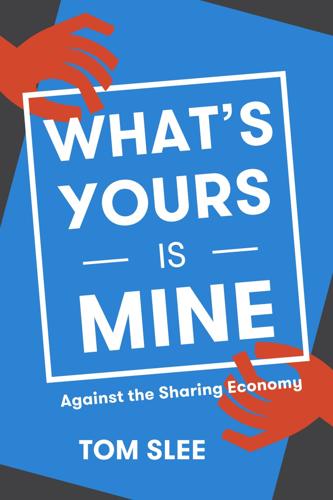
What's Yours Is Mine: Against the Sharing Economy
by
Tom Slee
Published 18 Nov 2015
In June 2013 they raised $60 million from Silicon Valley venture capitalists led by Andreessen Horowitz. In discussing the deal, Scott Weiss of Andreessen Horowitz said, “Lyft is a real community—with both the drivers and riders being inherently social—making real friendships and saving money.” Lyft’s John Zimmer had a clearer idea of the goals of the investment, saying “Andreessen Horowitz is ideal for us because they’ve built big businesses . . . They’re very accomplished operators and they understand how to scale a business.” 10 In the early days of the purchase, the media was confused about the business Lyft was in. Time, for example, wrote that “Today, millions of people are driving around in cars with empty seats while millions of others lack affordable auto transportation options.
…
Time, for example, wrote that “Today, millions of people are driving around in cars with empty seats while millions of others lack affordable auto transportation options. Lyft aims to bridge that gap.” 11 Lyft themselves encouraged the conflation of their business model with non-commercial activities like carpooling: when the service was first launched in 2012 journalist Liz Gannes asked John Zimmer about insurance and regulation, and he replied “our understanding is that when it’s ride-sharing, you can use your personal insurance policy. As for regulation, a lot of state laws are supportive of carpooling and ride-sharing and want to make that work.” 12 But of course most Lyft drivers were not giving a lift to people who happened to be going in the same direction, and they were not saving money, they were driving to make money.
…
Despite the anti-consumerist talk of the advocates, these scaled-up Sharing Economy companies are just as consumerist as those they have disrupted. LYFT Zipcar and Airbnb are not alone. Lyft is another company that has traded on the goodwill generated by its founding ideals of community and sharing, before the promise of community and person-to-person exchange became lost in the pursuit of growth and profit. In 2007 Logan Green and John Zimmer launched a ridesharing program at Cornell University called Zimride. The program took the traditional student ridesharing board and put it on to the Web, requiring that users sign on with their Facebook login.

The Sharing Economy: The End of Employment and the Rise of Crowd-Based Capitalism
by
Arun Sundararajan
Published 12 May 2016
Although often in the news because of the bruising battles it has waged with Uber for market share, Lyft projects a decidedly kinder and gentler feel than their larger competitor, even as they have graduated from the giant pink mustaches to a more subtle branding strategy. Their co-founder and president John Zimmer, with whom I have had many fascinating conversations over the years, has famously said that he doesn’t see Lyft as competing with Uber, but rather, as competing with “people driving alone.”13 “For me, personally, it was my interest in hospitality,” Zimmer told me, when I asked him about his motivation for starting Lyft. “There are two main pieces in hospitality success: providing an amazing, delightful experience, and having high occupancy.
…
I was a signatory, as were the Freelancers Union founder Sara Horowitz and the coworker.org founder Michelle Miller, both of whom I discussed in chapter 7. The 40 or so other initial signatories included the CEOs of Etsy (Chad Dickerson), Handy (Oisin Hanrahan), and Instacart (Apoorva Mehta); Lyft’s president John Zimmer and its CEO Logan Green; the Silicon Valley icon Tim O’Reilly; the influential labor organizer and former SEIU president Andy Stern; the venture capitalists Brad Burnham, Simon Rothman, and Hunter Walk; as well as the leadership of the Aspen Institute, the Roosevelt Institute, the Institute for the Future, and a few other professors, from Berkeley, Harvard and Northwestern.
…
Might the same hold true for our future regulatory structures? Lyft—Hospitality in Transportation A few blocks down the street from Airbnb’s shiny new corporate headquarters at 888 Brannan in San Francisco’s SoMa district is a small building at 568 Brannan, the site of Lyft’s original offices. In it’s simplest form, Lyft is a chauffeured car, on demand. You open the app, you tell it where you are, it shows you cars nearby, you request a car, and you get picked up in a few minutes. In a more sophisticated use case, you turn on your Lyft app when you drive to work, put in your destination, and others who might want to travel a similar route can pay you a little for a seat in your car.
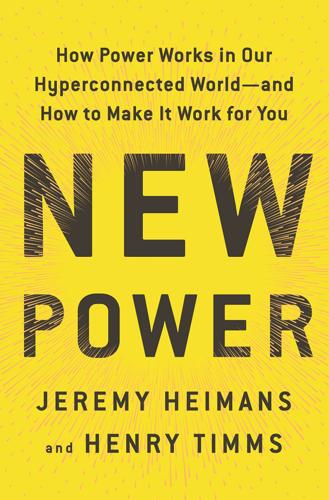
New Power: How Power Works in Our Hyperconnected World--And How to Make It Work for You
by
Jeremy Heimans
and
Henry Timms
Published 2 Apr 2018
“In true Uber fashion”: Harry Campbell, “Uber to Cut Rates in More Than 100 Cities,” The Rideshare Guy (blog), January 8, 2016. www.therideshareguy.com. “Even with [our] better service”: John Zimmer, “Standing Together: Community Update from John,” The Hub (blog), February 2, 2016. www.thehub.lyft.com “the bonds you create”: Ibid. “I love @Lyft drivers”: Cori Online, “#ThankYourLyftDriver,” Lyft (blog), January 31, 2016. www.blog.lyft.com. “As a new Lyft driver”: Harry Campbell, discussion with authors, February 16, 2016. “basically get your entire commission”: Timothy B. Lee, “Lyft Says Its Drivers Can Make $35 an Hour,” Vox, December 17, 2014. “One of the things that Uber drivers”: Harry Campbell, discussion with authors.
…
Across the country, reactions from drivers included strikes, protests, and threats of boycotts. Lyft, weighing a response to Uber’s price cut, had a decision to make. When Uber had made similar cuts in the past, Lyft had not, but it had cost them business. For all the fist-bumps in the world, price is the name of the game. As CEO John Zimmer wrote in a message to drivers: “Even with [our] better service, passengers first choose the more affordable option.” So Lyft decided to cut fares, too, but looked to their driver community to help guide the process. Bringing together a wide range of drivers in San Francisco, Lyft was able to generate a series of initiatives that would mitigate the cost cutting.
…
If it takes Uber three minutes to match driver and rider, and it takes Lyft eight, then the rider looking to get home, and the driver looking to make bank, aren’t going to be easily swayed by touchy-feely matters of culture and inclusion. But if and when that gap closes, things might start looking very different. There is big opportunity, too, if either platform starts to do more to truly benefit its drivers. In an effort to shed its Evil Empire image, Uber is exploring a range of initiatives to sweeten the deal for drivers, including offering them equity in the company. Lyft co-founder John Zimmer is warmly anticipating the fight ahead. If Lyft can begin to match Uber on product, as they are doing in major cities like San Francisco, where they hold almost half the market, then culture becomes a critical differentiator.
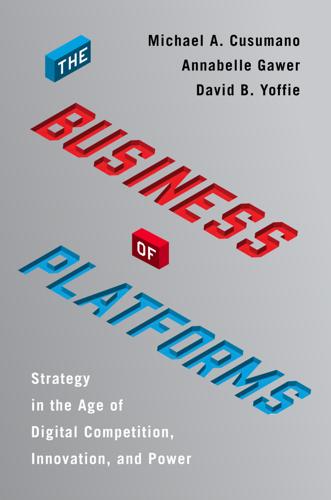
The Business of Platforms: Strategy in the Age of Digital Competition, Innovation, and Power
by
Michael A. Cusumano
,
Annabelle Gawer
and
David B. Yoffie
Published 6 May 2019
CHAPTER 7: LOOKING FORWARD: PLATFORMS AND THE FUTURE 1.Georgia Wells, “Snapchat Zigs Where Facebook Zags,” Wall Street Journal, June 14, 2018. 2.Khari Johnson, “Everything Amazon’s Alexa Learned to Do in 2017,” Venture Beat, December 29, 2017; Paul Cutsinger, “2017 Alexa Skills Kit Year in Review: More Than 100 New Products, Programs, Features, and Tools” January 5, 2018, https://developer.amazon.com/blogs/alexa/post/829a615b-301f-407c-96e7-6956fb988570/2017-alexa-skills-kit-year-in-review-more-than-100-new-products-programs-features-and-tools (accessed May 2, 2018); and Monica Chin, “Amazon Is Killing the Skill (as We Know It),” Tom’s Guide, September 13, 2018. 3.Jake Swearingen, “Amazon Could Give the Echo Dot Away and Still Make Money,” New York Magazine, January 3, 2018. 4.James Stables, “Google Assistant Aces Accuracy Study—but Alexa Is Catching Up Fast,” Ambient, April 30, 2018. 5.Rob Verger, “Someday, You Might Subscribe to a Self-Driving Taxi Service, Netflix-Style,” Popular Science, March 15, 2018. 6.Ibid. 7.Phil LeBeau, “General Motors Plans to Take On Ride-Sharing Services with Self-Driving Cars by 2019,” CNBC, November 30, 2018, https://www.cnbc.com/2017/11/30/gm-to-take-on-ride-sharing-services-with-self-driving-cars-by-2019.html (accessed June 2018). 8.Caitlin Huston, “Driverless Cars Could Cost 35 Cents per Mile for the Uber Consumer,” Marketwatch, September 19, 2016, https://www.marketwatch.com/story/demand-for-driverless-cars-could-boost-uber-to-2016-09-19 (accessed June 2018). 9.Christopher Mims, “How Self-Driving Cars Could End Uber,” Wall Street Journal, May 7, 2017. 10.Max Chafkin, “Uber’s First Self-Driving Fleet Arrives in Pittsburgh This Month,” Bloomberg, August 18, 2016. 11.See Lyft, “The Open Autonomous Era,” https://take.lyft.com/open-platform/ (accessed June 2018). 12.Mike Isaac, “Lyft Adds Ford to Its List of Self-Driving Car Partners,” New York Times, September 27, 2018, https://www.nytimes.com/2017/09/27/technology/lyft-ford-self-driving-cars.html?mcubz=0 (accessed June 2018). 13.John Zimmer, “The Third Transportation Revolution: Lyft’s Vision for the Next Ten Years and Beyond,” Medium, September 18, 2016, https://medium.com/@johnzimmer/the-third-transportation-revolution-27860f05fa91 (accessed June 2018). 14.Isaac, “Lyft Adds Ford.” 15.This section is based on Michael A.
…
Lyft’s platform initiative brings together several automakers, including GM, Land Rover, and Ford, to integrate their autonomous vehicle projects into one ride-hailing network.11 Initially, the Open Platform Initiative is offering partners access to ride data for testing purposes, but ultimately plans to make their self-driving vehicles available on its ride-hailing platform. Lyft’s chief strategy officer noted in late 2017 that “we’re focused on partnering with the auto industry because frankly, we think we can’t do this alone and need each other to be successful.”12 Lyft cofounder John Zimmer even predicted that “autonomous vehicle fleets will quickly become widespread and will account for the majority of Lyft rides within 5 years.”13 Lyft’s strategy may signal the emergence of a different type of transaction platform, where Lyft connects riders to self-driving vehicles from a variety of manufacturers.
…
By mid-2015, Uber had expanded to 300 cities around the world and had signed up its one-millionth driver, including over 150,000 active UberX drivers in the United States, and claimed to cover 75 percent of the U.S. population.11 Lyft had expanded to 65 cities with 100,000 drivers, all in the United States, by March 2015.12 With Uber and Lyft in the market, competition for drivers and riders was fierce. Both Uber and Lyft aggressively recruited drivers, offering cash bonuses of up to $500 or even $1,000 for drivers who switched from another ride-sharing platform, including Sidecar. Current drivers also received bonuses by referring drivers from another platform. Riders received credits for their first ride and additional credits when they referred other riders. Uber and Lyft periodically cut fares to attract riders.

A Brief History of Motion: From the Wheel, to the Car, to What Comes Next
by
Tom Standage
Published 16 Aug 2021
Lynk & Co., a Chinese firm that describes itself as “Netflix for cars,” says it will let users subscribe for as little as one month at a time. Ride-hailing companies are also experimenting with offering their services via a monthly subscription, just as mobile phones went from per-minute billing to monthly bundles. John Zimmer, the cofounder of Lyft, told the Wall Street Journal in 2018, “Where I see this going is instead of getting keys for a sixteenth birthday—which used to be that symbol of freedom in America—you get a Lyft subscription.” Even Ford, GM, and other carmakers talk of pivoting from selling vehicles to selling “mobility services,” though so far their investments in car-sharing and ride-hailing firms have not come to much.
…
In Eastern European countries a shared taxi is known as a marshrutka; in Turkey, as a dolmus; in Trinidad and Tobago, as a maxi taxi; in West Africa, as a kia kia, which means “quick quick”; in Thailand, as a songthaew; and in the Philippines, as a jeepney, a combination of jeep and jitney. Such shared taxis generally operate on particular routes, but not on a fixed schedule, waiting until they have enough passengers before setting out. In 2008 two American entrepreneurs, Logan Green and John Zimmer, started an intercity carpooling service for students. While studying at the University of California, Santa Barbara, Green had used car-pool rides, arranged via online message boards, to visit his girlfriend in Los Angeles. Zimmer had also used carpooling services, while studying at Cornell University, to travel to and from his home in upstate New York.
…
The possibility that cheap robotaxis could undermine car ownership explains why both ride-hailing firms, such as Uber and Lyft, and carmakers have been investing billions of dollars in autonomous-driving research. Any firm that develops a viable robotaxi would potentially be able to undercut both ride-hailing companies that rely on human drivers, and carmakers whose business model depends on selling people cars. Fear of this outcome has resulted in a constantly shifting web of alliances between AV start-ups, ride-hailing firms, and carmakers, as everyone tries to hedge bets. Waymo, for example, has partnerships with Lyft, Fiat Chrysler, and Jaguar Land Rover, while Toyota has invested in Uber’s AV unit.
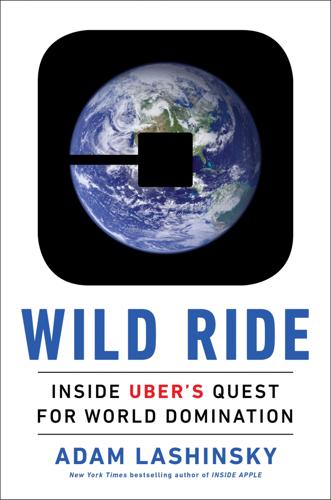
Wild Ride: Inside Uber's Quest for World Domination
by
Adam Lashinsky
Published 31 Mar 2017
Uber grew out of the San Francisco “brogrammer” culture and Garrett Camp’s delight in rolling in style. Lyft sprang from the idealistic mind of Logan Green, who’d served on the Santa Barbara, California, public transit board when he was a university student in that seaside town. Green’s passion was to encourage alternatives to driving. On a postcollege trip to Zimbabwe, he took note of the efficient if informal system of ridesharing the locals used. He went back to the United States and started a carpooling software company called Zimride, inspired by his trip to Africa. In 2007, Green got connected through a mutual friend to John Zimmer, a junior banker at Lehman Brothers who had studied the hotel business at Cornell University.
…
During the first week of 2016 Uber’s primary competitor in the United States, Lyft, announced a partnership with and investment by General Motors. GM agreed to invest $500 million, with plans to build its self-driving car capacity on the strength of Lyft’s national network. Lyft gave GM a seat at the technology table. GM provided Lyft with money, which it promptly began using to take market share from Uber in crucial markets, including San Francisco and Los Angeles. Lyft’s market share in major markets typically had been around 20 percent. In early 2016, with Uber attempting to squeeze costs out of its operations, Lyft began taking share, growing its share to as much as 37 percent, by Uber’s calculations, in San Francisco.
…
What’s more, that price might well be less than a cab ride. Sharing was a misnomer, given that Lyft’s drivers were out to make a buck every bit as much as Uber’s. But by promoting the fiction of a friendly gesture rather than a transaction, Lyft could make an argument, however thin, that its trips weren’t commercial. If so, Lyft reasoned they weren’t illegal taxi rides and didn’t fall under any regulator’s jurisdiction. In reality, Uber worked only with licensed livery drivers; Lyft’s drivers were freelancing amateurs. Yet Lyft had one critical similarity with Uber in that its smartphone app adopted the push-a-button/get-a-ride simplicity that catapulted Uber into the limelight.

WTF?: What's the Future and Why It's Up to Us
by
Tim O'Reilly
Published 9 Oct 2017
In 2007 Logan Green and John Zimmer had founded a peer-to-peer service called Zimride, which was focused on matching drivers and passengers for long intercity rides. In 2012, Sunil’s work inspired them to launch a new service, called Lyft, which offered the first public peer-to-peer ride-sharing service for local pickup not by professional drivers, but by “your friend with a car.” Sunil, late to the party despite being way early, launched Sidecar at about the same time. (It was still in private beta when Lyft launched publicly.) But by the time Sidecar went out to raise money, Uber and Lyft had already built huge venture capital war chests, and Sidecar was unable to compete in a capital-intensive business.
…
There are many historical examples of peer-to-peer public transportation. Zimride, Logan Green and John Zimmer’s predecessor to Lyft, was inspired by the informal jitney systems they observed in Zimbabwe. But using the smartphone to create a two-sided, real-time market in physical space was something profoundly new. After initial skepticism, Uber copied the peer-to-peer model a year later. Driven by an aggressive CEO, a stronger technical focus on logistics and marketplace incentives, a take-no-prisoners corporate culture, and huge amounts of capital, it has spent billions to outpace its rivals. Lyft is still a strong contender in the United States, gaining, but in distant second place.
…
The regulatory friction of the traditional approach makes taxi costs higher and availability worse. Uber and Lyft drivers routinely make more money per hour than taxi drivers; meanwhile, customers generally have better experiences and lower prices. Those who complain that Uber and Lyft “aren’t following the rules” need to ask whether those rules are achieving their intended objective. That doesn’t mean that Lyft and Uber should get a free pass on providing employee benefits and labor protections. As we’ll see in Chapter 9, the right answer is to develop a social safety net and regulatory frameworks as flexible and responsive as the on-demand business model itself. Uber and Lyft (and Airbnb) have taken the approach of asking for forgiveness rather than permission for many of their innovations, relying on swift consumer adoption to give them allies against regulators.
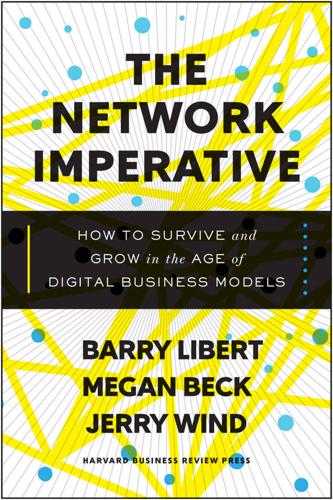
The Network Imperative: How to Survive and Grow in the Age of Digital Business Models
by
Barry Libert
and
Megan Beck
Published 6 Jun 2016
Daniel Ammann, GM’s president, said, “We think there’s going to be more change in the world of mobility in the next five years than there has been in the last 50,” and GM is getting ready for that change.1 From that perspective, Lyft is an excellent partner who will help GM turn their views of the market upside down. Lyft’s president John Zimmer stated, “We strongly believe that autonomous vehicle go-to-market strategy is through a network, not through individual car ownership.” According to executives at both GM and Lyft, they will start work on developing a network of self-driving vehicles—a challenge to Google, Tesla, and Uber, which are also devoting resources to this innovation.2 Openness Makes Space for Ongoing Change Will GM’s self-driving-car aspiration create value for the firm? Will its investment in Lyft lead to automotive leadership in ten years?
…
General Motors (GM) is coming enthusiastically, albeit a bit late, to the innovative ride-sharing market with a $500 million investment in Lyft as part of Lyft’s latest $1 billion venture financing round. Although a shift from car ownership to car sharing, and even further to autonomous vehicles, could be a risky disruption to their market, GM’s leaders have decided to embrace the changing business model landscape in transportation and innovate what they do and how they do it. Daniel Ammann, GM’s president, said, “We think there’s going to be more change in the world of mobility in the next five years than there has been in the last 50,” and GM is getting ready for that change.1 From that perspective, Lyft is an excellent partner who will help GM turn their views of the market upside down.
…
The task of managing external assets, however, is entirely different from managing those owned by your firm. To maintain and grow access to a network’s assets, you must carefully manage the sentiment and engagement of the network itself. If Uber doesn’t keep its drivers happy, there are other ride-sharing networks such as Lyft and Sidecar ready to take them into the fold. Let’s reflect on your organization and pinpoint where you lie on the spectrum from tangible to intangible. Ask yourself these questions, and then mark on the scale of tangible (1) to intangible (10) where your company falls on the spectrum. What are the most important assets of your company?
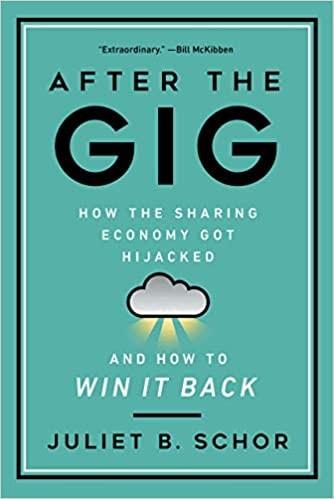
After the Gig: How the Sharing Economy Got Hijacked and How to Win It Back
by
Juliet Schor
,
William Attwood-Charles
and
Mehmet Cansoy
Published 15 Mar 2020
He couldn’t find rides, had been blackballed by dispatchers for his frequent cancellations, and got charged $1,000 for a private driver on New Year’s Eve. Before long, he teamed up with fellow entrepreneur Travis Kalanick to found Uber.24 Lyft’s story started in Zimbabwe, where Logan Green saw passengers using shared minivan taxis, a common practice in many Global South countries, as well as some low-income neighborhoods in the U.S. Impressed by this example, Green and John Zimmer started Zimride (from Zimbabwe), focusing on long-distance travel to and from college campuses. They debuted at Cornell, a famously isolated university. The platform was more convenient than bulletin boards for matching riders and drivers and preferable to Craigslist because it linked users to Facebook, which allowed them to research each other before committing.
…
Angelo, a courier, thought the system was unfair: “Instead of being an employee, you’re an independent contractor now. I understand it with certain companies, [but] not with these big companies, like Uber and Lyft. I don’t work for them, but I feel like they’re making so much money. Just like these restaurants that have these people working for three dollars an hour as base pay and then tips. It’s ridiculous. Like no, your profits are in the millions, hundreds of millions. You can afford to pay an hourly wage.” Mitch, who was combining Lyft, Postmates, and DoorDash as he tried to build an audio-engineering business, also considered the whole setup problematic. “Is it fair to me to have to own, pay for, maintain my own car, gas, insurance, parking, cleaning, dealing with the smell of food in my car?
…
Gideon, a recent college graduate, and actor and dancer whose career was going relatively well, relied on platform work to supplement his theatrical earnings. He worked about twenty hours a week on Lyft and TaskRabbit and has also put in time on Instacart, which he liked less because the work was “isolated and lonely.” Earlier, he’d worked in food service and at Starbucks, which he also didn’t like: “It was really taking over my life so, I was living to work versus working to live. TaskRabbit feels like I’m working to live.” For Gideon, scheduling flexibility was paramount and app-based work allowed him to go on auditions and to rehearsals. “These other jobs [TaskRabbit, Lyft] are keeping me out of a slave trade service, and it’s giving me that control to really make the work that I want to work and it’s twenty hours at jobs that pay more than most part-time jobs do.”
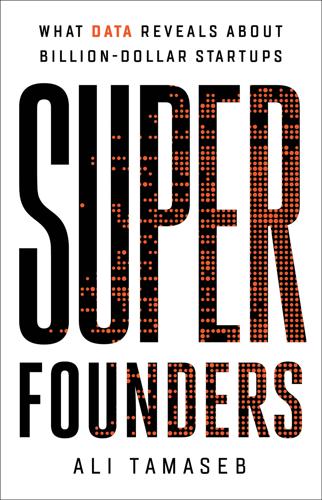
Super Founders: What Data Reveals About Billion-Dollar Startups
by
Ali Tamaseb
Published 14 Sep 2021
In any case, technical and non-technical founders seem to reach billion-dollar outcomes at roughly the same rates. Some startups manage to make it work with either two technical founders or two non-technical founders. Lyft, initially called Zimride before a pivot, was started by two non-technical founders. Logan Green, the CEO, began the company shortly after graduating from University of California, Santa Barbara, with a bachelor’s degree in business economics. His co-founder, John Zimmer, had a degree in hotel administration from Cornell. Both saw the early potential of ridesharing. Although Green had learned to code and was able to build initial prototypes, they had to bring on senior and junior engineers to develop the complicated back-end systems required for ridesharing.
…
A few months later, in 2012, Zimride held an internal hackathon in an attempt to increase user retention and engagement. The solution they came up with was Lyft. The following year, the company switched its name (and focus) and sold its remaining Zimride assets to Enterprise Rent-A-Car. Lyft and Sidecar, competing with each other, gained a lot of traction in San Francisco. They proved that consumers were willing to jump in an unlicensed taxi to go from point A to B (Uber’s black cars were licensed). At this point, Uber had raised $11 million from VCs, Zimride/Lyft had raised $6 million, and Sidecar had raised $10 million. When Lyft and Sidecar became popular, Uber realized the larger opportunity afforded by the gig economy, transitioned from the luxury service to the affordable service, and launched UberX.
…
We failed—for the most part—because Uber is willing to win at any cost and they have practically limitless capital to do it.”6 Sidecar shut down operations on New Year’s Eve in 2015, and General Motors acquired its remaining assets and intellectual property. Uber went on to raise billions of dollars to become the dominant force in the ridesharing industry. Today, Lyft and Uber have raised billions of dollars from investors in public and private markets. Despite its lower sales and market share, Lyft has remained persistent over the last ten years, establishing itself as a more ethical alternative to Uber, which has suffered a long list of scandals and controversies. The two companies also perform differently by location, with Lyft seeing more success in cities like Detroit and San Francisco, while Uber outperforms in Miami and Houston. Neither company has turned a profit—likely because of intense price competition with one another.

Nothing but Net: 10 Timeless Stock-Picking Lessons From One of Wall Street’s Top Tech Analysts
by
Mark Mahaney
Published 9 Nov 2021
Survey work I had run indicated that less than a third of US consumers had ever even used a ridesharing service, and I thought this penetration could more than double over time. I also believed that ridesharing carried compelling value propositions for both consumers and drivers. I declared a preference for UBER over LYFT because it had a global presence (thus a larger TAM), while Lyft was purely a US service, and because Uber had a much stronger market share position than Lyft in the United States. The founders of Lyft (John Zimmer and Logan Green) were actively involved in running Lyft, which was a distinct positive, but I also had confidence in the management capabilities of Uber CEO Dara “Dog’s Breakfast” Khosrowshahi, which I thought somewhat mitigated the fact that Uber’s founders were no longer actively involved.
…
In mid-March 2020, in the wake of intense Covid-19 pandemic pressures on ridesharing demand and investor concerns about Uber’s liquidity, Uber’s share price broke below $15, almost 70% below its IPO price. Lyft (LYFT) IPO’d on Friday, March 29, 2019, at $72 and traded up 9% on its first day to $78. But as of early 2021, it had yet to reach that price level again. And except for two days in April 2019, it has been a broken IPO, trading well below that $72 level. In mid-March 2020, it plummeted all the way down to $16, almost 75% below its IPO price. In October 2019, as the share prices of both UBER and LYFT were struggling, influential CNBC contributor “Downtown” Josh Brown wrote that Uber’s failed IPO changed investor sentiment from “fantasy valuation back to profitability.”
…
Although the Covid-19 crisis did have a materially negative impact on demand for the two leading US ridesharing services, Uber and Lyft shares were under pressure long before the pandemic because of the large losses both companies were running. In 2019, Lyft generated $2.6 billion in net income loss, while Uber generated $8.6 billion in net loss. These loss levels were practically unprecedented. And in the quarters post their IPOs, there was substantial uncertainty whether Uber and Lyft would ever be profitable. That uncertainty was exactly what Brown’s comments captured. It is striking that UBER then traded up almost 70% in 2020.
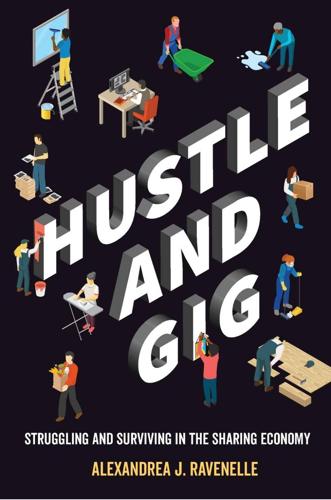
Hustle and Gig: Struggling and Surviving in the Sharing Economy
by
Alexandrea J. Ravenelle
Published 12 Mar 2019
By definition, when one moves to a “modern”-day society—or at least a city—one loses the community connections of Gemeinschaft; it is also in Gesellschaft that “the family is decaying.”23 The sharing economy paints itself as a solution, as a return to small-town or even village life. New York University Stern School of Business professor Arun Sundararajan argues that “the extent to which people are connected to each other is lower than what humans need. . . . Part of the appeal of the sharing economy is helping to bridge that gap.”24 John Zimmer, a cofounder of the taxi app Lyft, compares the sharing economy to his time spent on the Oglala Sioux reservation in Pine Ridge, South Dakota: “Their sense of community, of connection to each other and to their land, made me feel more happy and alive than I’ve ever felt before,” he says. “I think people are craving real human interaction—it’s like an instinct.
…
While drivers who utilize both platforms often view Lyft more favorably, Lyft has also cut rates—reducing fares nationwide in April 2014 by as much as 30 percent.41 Table 2 shows how some New York City uberX rates have changed. Within four years, uberX drivers saw their per-minute rate cut in half, their mile rate reduced by 42 percent, and their base fare slashed by a whopping 58 percent. The minimum price for a ride decreased by about a third. Table 2 UberX Rates in New York City, 2014 to 2018 In addition to reducing rates, both services have also changed their commissions. When Lyft reduced rates in 2014, it “temporarily eliminated its 20% commission ‘to provide our growing driver community with peace of mind’ during the price drop.”
…
An Airbnb host isn’t so much “sharing” her home or “hosting guests” as she is renting her home out. TaskRabbit assistants and Kitchensurfing chefs aren’t “sharing” their services but being paid. Likewise, even though Uber and Lyft describe themselves as “ride-sharing,” charging for private vehicle transportation is simply a taxi or chauffer service by any other name. While Lyft (slogan: “Your friend with a car”) originally encouraged riders to “sit in the front seat like a friend, rather than in the backseat like a fare,” such “friendship” didn’t eliminate the need to pay the fare.12 The reinvention of terms isn’t limited to the companies themselves but can also carry over into descriptions of the services by researchers.
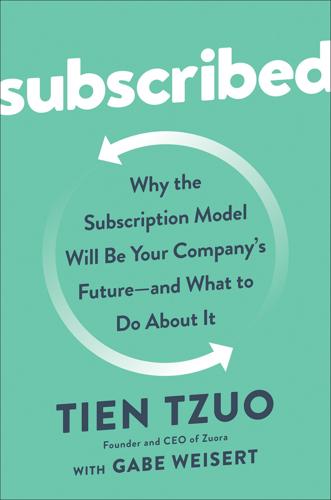
Subscribed: Why the Subscription Model Will Be Your Company's Future - and What to Do About It
by
Tien Tzuo
and
Gabe Weisert
Published 4 Jun 2018
Uber and Lyft are both vying for that same lock-in effect by offering discounted services around consistent consumption patterns—in other words, they’re going after my commute. As Lyft president John Zimmer, anticipating fully autonomous vehicles, told The New York Times: “The cost of owning a car is $9,000 a year. Let’s say we offer a $500 monthly plan in which you can tap a button and get access to transportation whenever you want it, and you get to choose your room-on-wheels experience. Maybe you want a cup of coffee on your way to work, or you want to watch the Warriors game later, so you’re in what’s basically a sports bar, with a bartender.” CELL PHONES ON WHEELS Today the accepted Silicon Valley wisdom is that as cars turn into cell phones on wheels, software will inevitably trump hardware, just as Microsoft trumped IBM.
…
The company may take a short-term profitability hit, but the goal is to gain long-term customer loyalty in a very young and turbulent market—and this customer loyalty is becoming more and more important as ridesharing becomes a commodity. Here in the Bay Area, the Uber and Lyft markets are really fluid. I’ll frequently toggle between the two services—lots of the cars even feature both logos in their windshields. There’s very little brand loyalty on my part. Now contrast that with my Amazon Prime experience. All due respect to other potential ecommerce vendors, but Amazon has my business, in no small part due to Amazon Prime—they hooked me with the free shipping, and now I’ve got music, movies, and all sorts of other services. I’m not going anywhere. Uber and Lyft are both vying for that same lock-in effect by offering discounted services around consistent consumption patterns—in other words, they’re going after my commute.
…
Online streaming was just around the corner (as many people have pointed out, Reed Hastings called it Netflix for a reason). Zipcar was also a really interesting new concept. It was initially seen as an hourly competitor to Hertz and Budget, but you could already see new ideas opening up around cars and transportation, which Uber and Lyft capitalized on later. And of course the iPhone had just come out—at the time it was more of a fun, plug-and-play app container, but there was the potential for geolocation, identity, messaging. As bandwidth increased and platform costs decreased, there was a logical progression going on toward on-demand, digitally enabled services.
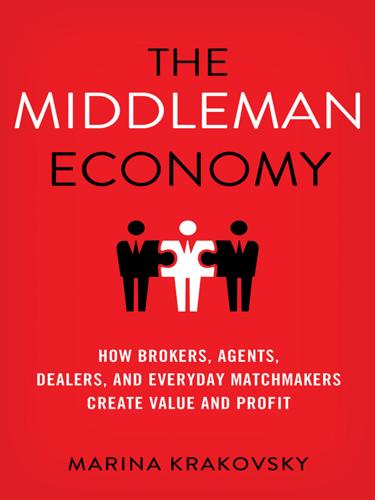
The Middleman Economy: How Brokers, Agents, Dealers, and Everyday Matchmakers Create Value and Profit
by
Marina Krakovsky
Published 14 Sep 2015
He owes it to his limited partners looking for huge returns to be highly selective, and to that end every idea he backs has to fit two criteria: “nonconsensus and right,” a popular idea in elite VC circles. The nonconsensus part is the one that refers to crazy ideas. “One of my favorite things to hear from an entrepreneur in a pitch is, ‘I’m not sure this is legal,’” he says. This is exactly what he heard from the founders of Lyft, Logan Green and John Zimmer, who were pretty sure their ride-sharing business was running afoul of current taxi regulations. Maples isn’t one to advocate shady, unethical start-ups, but rather those that challenge laws that, while originally designed to protect consumers, may no longer be in consumers’ best interest.
…
The Truckless Trucking Company * * * Long before there was Lyft and before there was Uber, and well before mobile devices or even the Internet, there was C. H. Robinson. The company, founded back in 1905, in 2014 ranked #220 on the Fortune 500, the annual list of the highest-grossing companies in the United States. Its annual revenues of $12.7 billion put C. H. Robinson just ahead of household brands Toys ‘R’ Us and Nordstrom and well above Facebook and Harley-Davidson. If you haven’t heard of this behemoth from Eden Prairie, Minnesota, it’s only because its customers are other businesses: rather than arranging rides for busy urbanites, as Lyft and Uber do, C.
…
In this highly connected world, “things and entities that accelerate connections are going to be more valuable,” Maples believes.15 This idea is self-evident when you think of core Internet technologies and social networking tools that speed up our personal connections; it is also true of middleman businesses Maples has backed, such as Chegg, Lyft, and TaskRabbit, that speed up connections between buyers and sellers. Perhaps more surprisingly, it is also true of many human middlemen, including venture capitalists like Maples himself: great at spotting high-potential entrepreneurial ideas, effective venture capitalists (VCs) command the space between entrepreneurs and the limited partners (LPs) who entrust VCs with their capital.
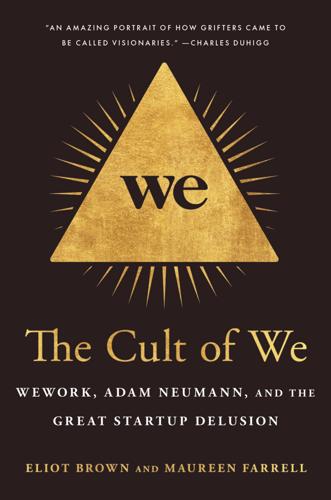
The Cult of We: WeWork, Adam Neumann, and the Great Startup Delusion
by
Eliot Brown
and
Maureen Farrell
Published 19 Jul 2021
Further afield was the potential investment in the ride-hailing company Lyft. Neumann told his deputies he hoped to buy Lyft, and he met repeatedly with John Zimmer, its president and co-founder, about a possible investment by WeWork. It would have been a rather strange marriage: two aging startups, both bleeding money, with one investing the venture capital dollars it raised from SoftBank into the other. (When Masayoshi Son later found out about the talks, he was furious with Neumann and forced him to shut the discussions down. SoftBank was a backer of Lyft’s rival Uber. Neumann told aides he preferred Lyft, in part because it was still run by its founders.
…
JPMorgan was still lagging behind its main rivals in the constant battle to win the top tech IPOs. Its team had just lost the lead position on Peloton’s IPO to Goldman Sachs even after Wintroub and others had spent years helping the exercise-bike startup raise money. And while JPMorgan did lead Lyft’s IPO—only after pledging not to work with Uber for the next eighteen months—the initial euphoria had turned to disappointment when Lyft’s stock plunged below its IPO price in its second day of trading. Wintroub’s presentation lacked the pomp of Goldman’s. Rather than emphasize the prospect of reaching $1 trillion, Wintroub talked about WeWork’s strategic strengths—how the company was on the path to reshaping the way in which large corporations would rent real estate.
…
“You have the full resources”: Dimon to Neumann and IPO team, Spring 2019. helping the exercise-bike startup: Matt Turner, “A Bunch of Cycling Enthusiasts Just Helped Peloton Cycle Raise $325 Million—Betting It Could Be ‘the Apple of Fitness,’ ” Business Insider, May 24, 2017. Lyft’s stock plunged below its IPO price: Corrie Driebusch, “Lyft Shares Falter on Second Trading Day,” Wall Street Journal, April 1, 2019. “superpowers” of “scale” and “technology”: IPO pitch presentation to WeWork, JPMorgan Chase, May 2020. JPMorgan’s range: $46 billion to $63 billion: Eric Platt, Andrew Edgecliffe-Johnson, James Fontanella-Khan, and Laura Noonan, “WeWork Turmoil Puts Spotlight on JPMorgan Chase and Goldman Sachs,” Financial Times, September 24, 2019.
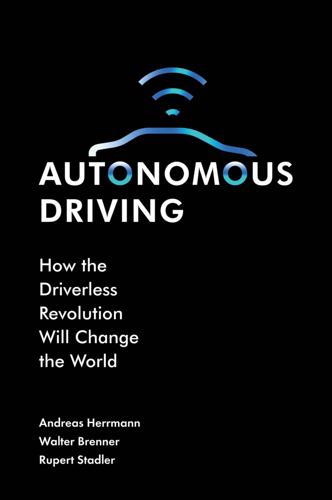
Autonomous Driving: How the Driverless Revolution Will Change the World
by
Andreas Herrmann
,
Walter Brenner
and
Rupert Stadler
Published 25 Mar 2018
He plans to develop Ford into a mobility service, offering driving services with autonomous vehicles (similar to Uber) and producing the cars for such a service itself. General Motors has invested enormously in the mobility platform Lyft, announcing plans to set up an on-demand network of self-driving cars. John Zimmer, president of Lyft, expects car ownership in megacities to be of little importance in 10 years. In 2016, Lyft already organised about 14.6 million rides per month, three times as many as a year before. So far, Cadillac is the only General Motors brand equipped with the technology for autonomous driving. It is well known that Hyundai has made substantial investments in artificial intelligence in order to create the technological basis for connected and autonomous cars.
…
Ownership Access and Sharing User as Use of one’s Rental car sharing, business-to-consumer (DriveNow, driver own car Car2Go) and peer-to-peer (Croove, Getaround) User as passenger Use of a taxi Ride sharing (Uber, Lyft) and carpooling (BlaBlaCar) Source: The authors. Note: Mobility apps can link up the various modes of transportation so that the user can identify the fastest and most convenient way to get from one place to another. The Sharing Economy 343 sharing (DriveNow, car2go, Flinkster, Mobility, ReachNow, ZipCar) and with peer-to-peer car sharing (Drivy, Tamyca, Croove, CarUnity, Sharoo, Turo, Getaround), users have to drive the cars themselves. With ride sharing (Uber, Lyft, myTaxi) or carpooling (BlaBlaCar), they are driven by a chauffeur.
…
For example, we are currently seeing the rise of Uber in the short-term ride-sharing market. Uber’s core values are its pricing, reliability and convenience better, faster and cheaper than a taxi. In comparison, Lyft, which offers an almost identical service, positions itself as friendly we’re your friend with a car and part of your community greet your driver with a fist bump. Lyft has not seen at all as much growth as Uber; one reason is because they put too much emphasis on consumers’ desire to bond with each other rather than gain access to a vehicle. Meanwhile, there are hundreds of car-sharing providers all over the world: Zipcar is well established in North America and Orix, Park24, PPzuche and EVCard operate in Japan and China.

The New Map: Energy, Climate, and the Clash of Nations
by
Daniel Yergin
Published 14 Sep 2020
In New York, a Facebook posting by Green caught the eye of a young Wall Street analyst named, by odd coincidence, John Zimmer, who could not help but note the new service’s name, although obviously it had no connection to him. Perhaps it was fate. He had gone to hotel school and looked at transportation as a “hotel occupancy” problem. Hotels seek to be 80 or 90 percent occupied; personal cars are “occupied”—that is, used—only 5 percent or maybe 10 percent of the time. A more efficient transportation system would raise auto “occupancy” to a much higher level. Green and Zimmer connected, and in 2012 began to offer short rides in San Francisco. They called the new venture Lyft. Anyone could be a driver.
…
Anyone could be a driver. In contrast to the upmarket “private driver” black car of early Uber, they provided Lyft drivers with pink mustaches to affix to the front of their cars. “Friendliness” and fist bumps were Lyft’s mode, a studied contrast to Uber’s ersatz limousine. Uber wasted no time in striking back, launching its own service with ordinary drivers. “We chose to compete,” Kalanick wrote in a blog post.3 And compete Uber did, and fiercely so. Its new business model was UberX, which adopted Lyft’s model and enrolled nonprofessional drivers who could work as little or as much as they wanted. They would be contractors, not employees.
…
They would be contractors, not employees. In other words, it’s a BYOC model—Bring Your Own Car. Uber drivers, 60 percent of whom have other jobs, have become prime examples for what became known as the “gig economy.” Both Uber and Lyft also rolled out modern versions of carpooling services that match up a rider with another rider in close proximity headed to nearby destinations. Uber and Lyft rolled forward, opening in city after city. Customers, initially many of them millennials, were quickly won over. In its quest to expand, Uber went to war with local taxicab drivers and owners and transportation regulators, all of whom opposed it as an unregulated taxi company.
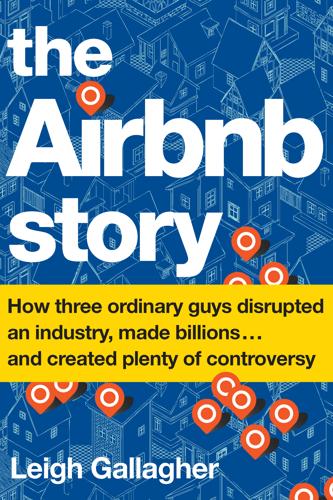
The Airbnb Story: How Three Ordinary Guys Disrupted an Industry, Made Billions...and Created Plenty of Controversy
by
Leigh Gallagher
Published 14 Feb 2017
From Jeff Weiner, Chesky learned the importance of removing those managers who weren’t performing. From Salesforce.com CEO Marc Benioff he learned how to push his executive team. He also had access to an informal support group among his current-generation start-up peers, including Travis Kalanick of Uber, Drew Houston of Dropbox, Jack Dorsey of Square, and John Zimmer of Lyft, all sharing their individual lessons about everything from running start-ups to balancing friends, relationships, and other elements of young founder life. A key principle of Chesky’s sourcing strategy was to become creative with identifying just who the experts were, and seeking out sources in unexpected disciplines.
…
This kind of “sharing”—this hyperpersonal opening up of the most intimate and safest aspect of one’s life to a stranger—is not present when you hire a person to fix a leak on TaskRabbit, or when you get into someone’s air-conditioned black car for a silent ride to the airport with your head in your phone. More than anything else, it is this aspect of Airbnb that distinguishes it from Uber, Lyft, and any other of its sharing-economy peers. Elisa Schreiber, marketing partner at Greylock Partners, an investor in the company, summarized this distinction concisely after we got to talking about it one day. “Uber is transactional,” she said. “Airbnb is humanity.” Unfortunately, as we are about to see and as Airbnb has learned, despite its best intentions, that “humanity” can be a frustrating thing.